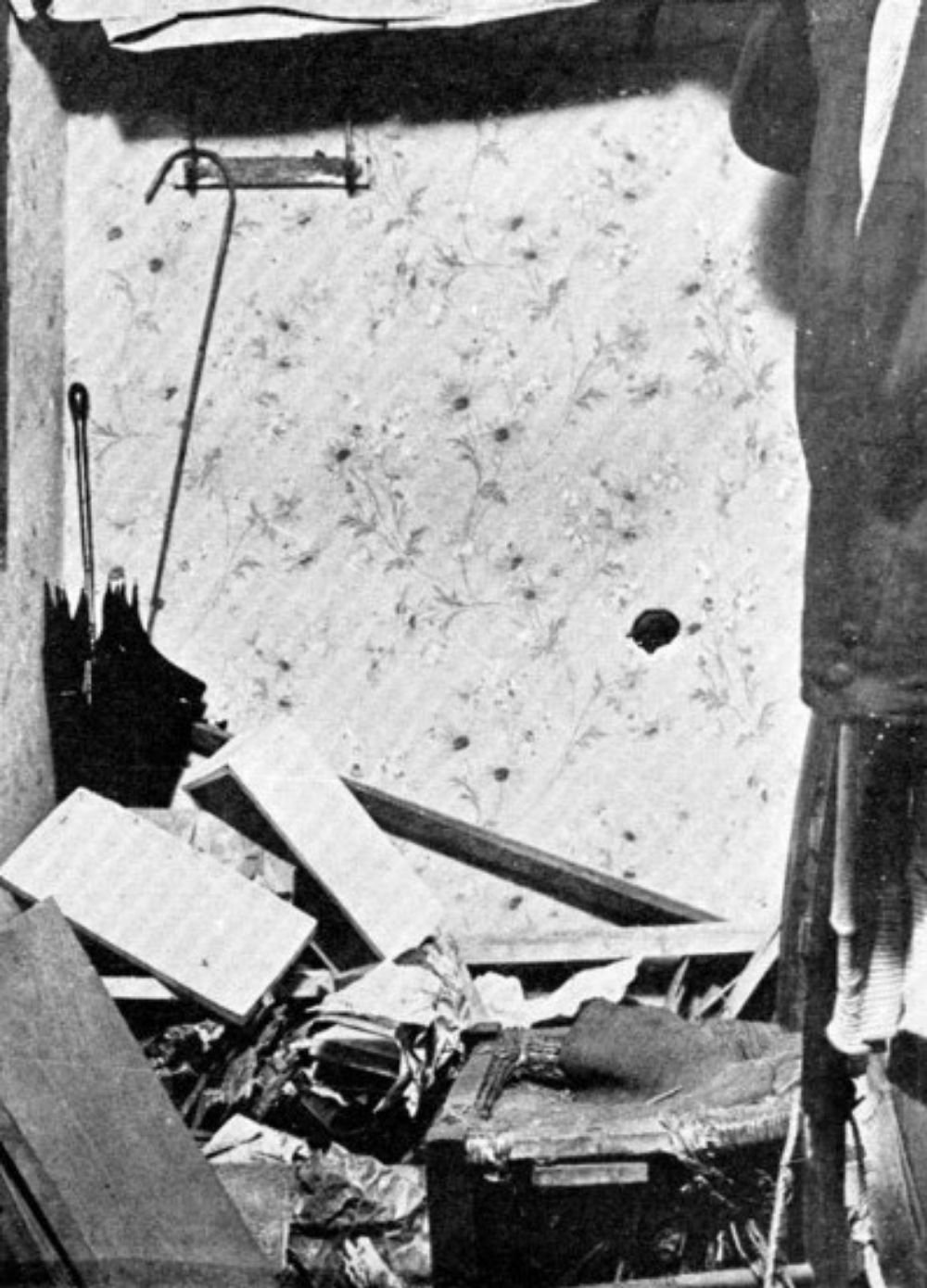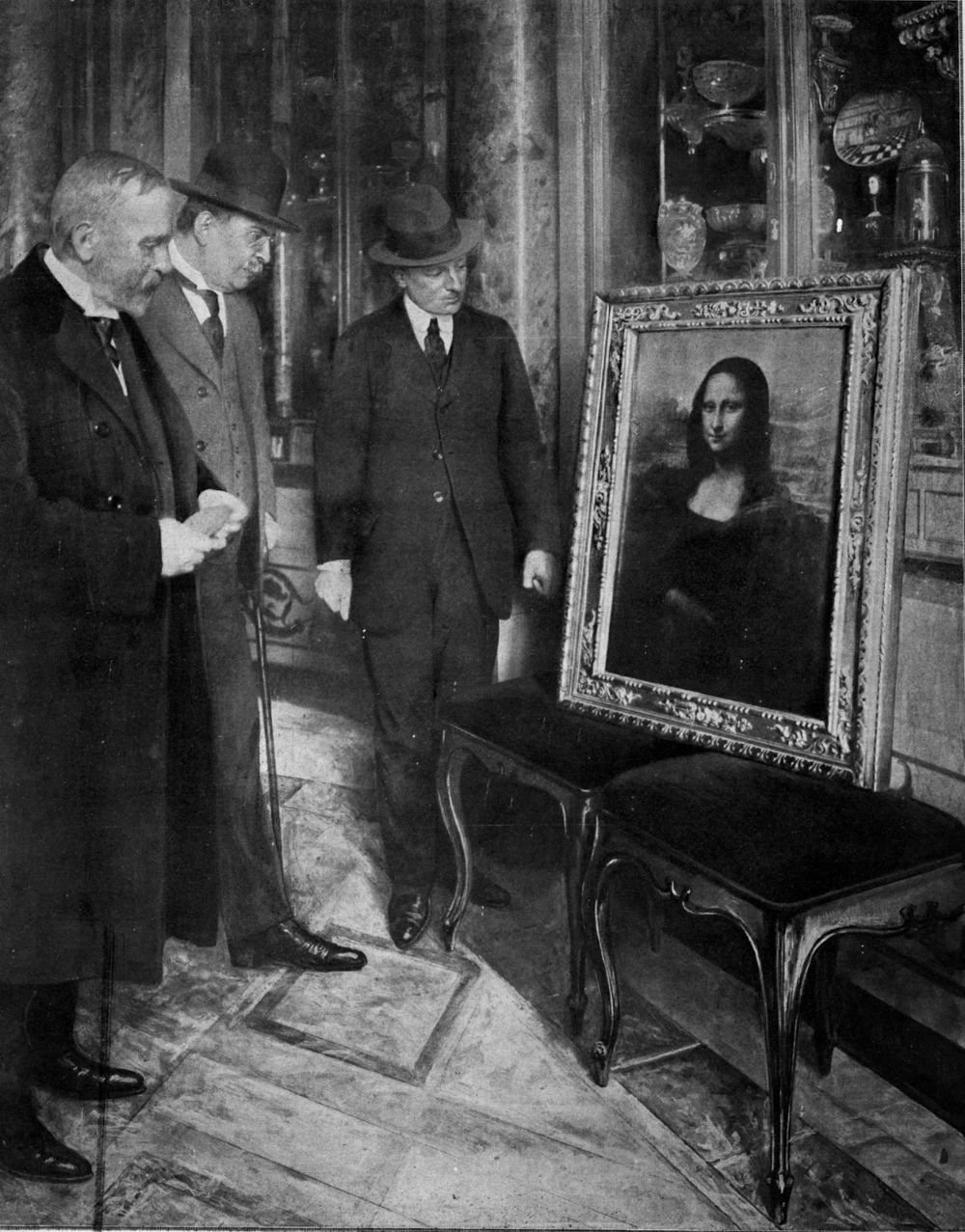
On the right is the Mona Lisa painting, while on the left appears the thief, Vincenzo Peruggia.
On August 21, 1911, the world witnessed one of the most dramatic events in the history of art: the theft of the Mona Lisa, the timeless masterpiece by Leonardo da Vinci. This theft was not just a passing incident; it was a story that involved mystery, nationalism, and an unexpected turn in the fate of the most famous painting in history.

Leonardo Da Vinci (1452-1519)
To understand the significant impact of this theft, it’s important to recognize the status of the Mona Lisa before 1911. Although it was known and respected in artistic circles, its fame was not yet on the global scale that we know today. The painting was created in the early 16th century and was part of the collection of the kings of France before finding its place in the Louvre Museum.
The thief, Vincenzo Peruggia, was an Italian worker at the Louvre Museum. Driven by a sense of nationalism, Peruggia believed that the Mona Lisa should return to Italy. He meticulously planned the theft, exploiting his knowledge of the museum and its routine.
On the day of the theft, Peruggia took advantage of the fact that the museum was closed for maintenance. He wore the uniform of the security guards, hid the painting under his coat, and simply left the museum without raising any suspicions. No one noticed the disappearance of the painting until the next day.
The disappearance of the Mona Lisa was a shock to the artistic world and the public. The French police embarked on an extensive investigation, which involved many prominent artistic figures, including Pablo Picasso. The mystery surrounding the fate of the painting and the details of the theft increased its global fame.
Two years after the search, in 1913, Peruggia attempted to sell the painting in Italy, leading to his discovery and arrest. The Mona Lisa was recovered and returned to the Louvre Museum. Peruggia was tried and received a reduced sentence due to his nationalistic motives.
The theft of the Mona Lisa was not just a transient incident in the history of art, but a turning point in how the public interacts with artworks. After this event, the Mona Lisa became more than just a painting; it became a symbol of artistic mystery and a testament to the ability of art to evoke passion and nationalism.

The gap on the wall of the Carre Gallery of the Louvre Museum, Paris, where the Mona Lisa was exhibited before it was stolen 1911.

Portrait of Vincenzo Peruggia, ca.1910s.

Portrait of Vincenzo Peruggia, 1910.

Paris Hopital where Vincenzo Peruggia lived and where he was kept for 28 months, after he stole the canvas painted by Leonardo da Vinci in August of 1911 at the Louvre museum.

This image shows Vincenzo Peruggia’s apartment after police went through it to find the stolen Mona Lisa painting, 1911.

Mugshot of Vincenzo Perugia, the Italian man who stole the Mona Lisa out of the Louvre Museum in Paris.

Vincenzo Peruggia the kidnaper of the Mona Lisa is shown in court in Florence, Italy, c.1914.

The Mona Lisa on display in the Uffizi Gallery, in Florence, 1913. Museum director Giovanni Poggi (right) inspects the painting.

Professor Luigi Cavenaghi (second from right) with The Gioconda (Mona Lisa) exhibited in the Uffizi portrait room, after it was recovered in Florence following Vincenzo Peruggia’s theft, Italy, photograph by Perazzo, from L’Illustrazione Italiana, Year XL, No 51, December 21, 1913.

La Gioconda Florence Uffizi in the hall of portraits in 1913 after that the painting by Leonardo da Vinci was stolen in 1911 at the Louvre by Vincenzo Peruggia. The Monna Lisa was exhibited to the public for two days under close supervision.

People gather around the Mona Lisa painting on January 4, 1914 in Paris.

Two men carry the painting of the Mona Lisa back to the Louvre in Paris, c.1914.
Discover more from History in Pictures
Subscribe to get the latest posts sent to your email.